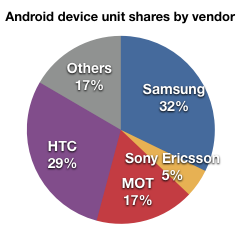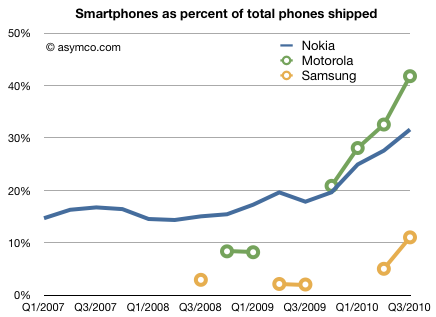Gartner released sell-through data for the handset market. In the release appears an estimate of total Android 3Q Smartphone sales (20.5 million). Combining this with what some of the vendors have reported in terms of units sold, we can estimate the share of Android by vendors.
Note that this is a rough estimate. We don’t have data on Sony Ericsson’s smartphone units sold and we don’t know the mix of HTC’s Windows Mobile vs. Android. I’m also assuming LG as part of Others. The data from Gartner is claimed to be sell-through whereas vendors report sell-in so there is more roughness about each vendor.
Regardless of these potential sources of error, it’s a very safe bet that Samsung and HTC are the largest Android vendors by a fairly large margin.
It’s perhaps noteworthy that both are also committed Windows Phone vendors. According to pdadb.net here is the count of Windows Phone SKUs by vendor:
- HTC 12
- LG 5
- Samsung 2
- Dell 2
- Toshiba 1
Motorola is keeping its Windows Phone options open, leaving “Others” as the only likely exclusive Android vendors.



